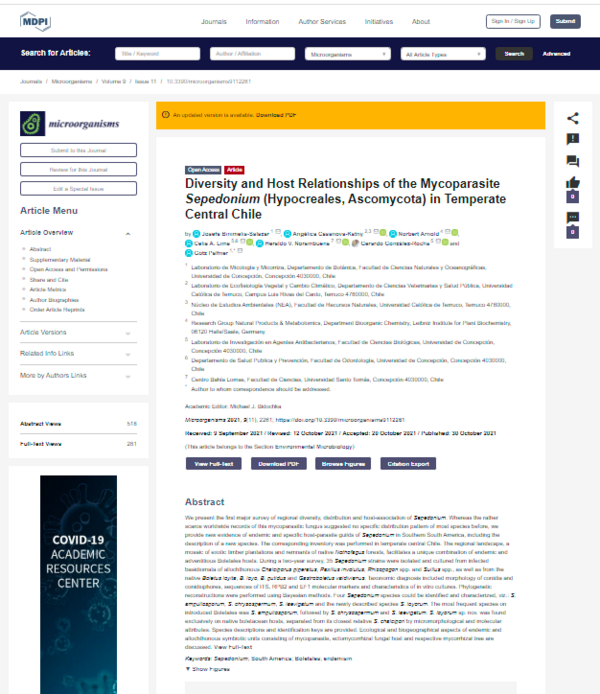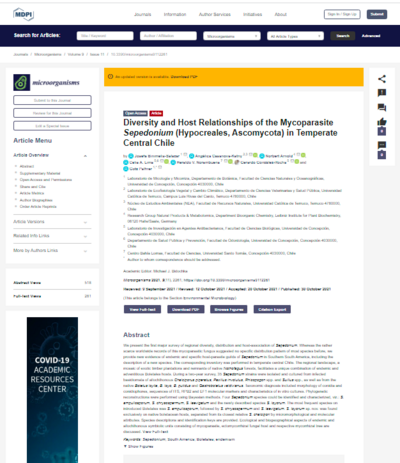New fungal species discovered in Chile.
Together with local partners, IPB fungi expert Norbert Arnold has discovered a new fungal species in Chile. Because of its close association with the Chilean endemic mushroom Boletus loyo, they named the species Sepedonium loyorum. All species of the genus Sepedonium live as parasitic fungi on the fruiting bodies of other mushrooms, all of which are classified in the order Boletales. Many high-quality edible mushrooms belong to this order and also Boletus loyo is a valued edible boletus in Chile. Sepedonium species initially form a white mycelium on their host mushrooms, which turns golden yellow as sporulation begins. An infestation of Sepedonium makes the edible boletus mushy and inedible to humans. But interestingly, infested mushrooms turn out to stay free of other molds. Therefore, the researchers assume that Sepedonium produces defense substances against its fungal competitors.
Indeed, the Halle scientists were able to prove this. The chemists have been analyzing the constituents of South American Sepedonium species for more than ten years. Among the isolated compounds named chilenopeptins, some candidates were found that had a strong growth-inhibiting effect on microorganismic fungi, especially on plant pathogens. In 2011, as part of these studies, Sepedonium loyorum - at that time not yet classified as a new species - also found its way from the Chilean forests to the local laboratories. Now the authors have provided a detailed description of S. loyorum and closely related species that includes morphological and chemical traits as well as molecular markers. In addition to an identification key, the study also provides findings on the occurrence of Sepedonium species and their fungal hosts, which in turn are bound to specific tree species as mycorrhizal fungi. This is the first comprehensive analysis of distribution, host association, and regional diversity of different gold mold species, including ecological and mycogeographical aspects.



